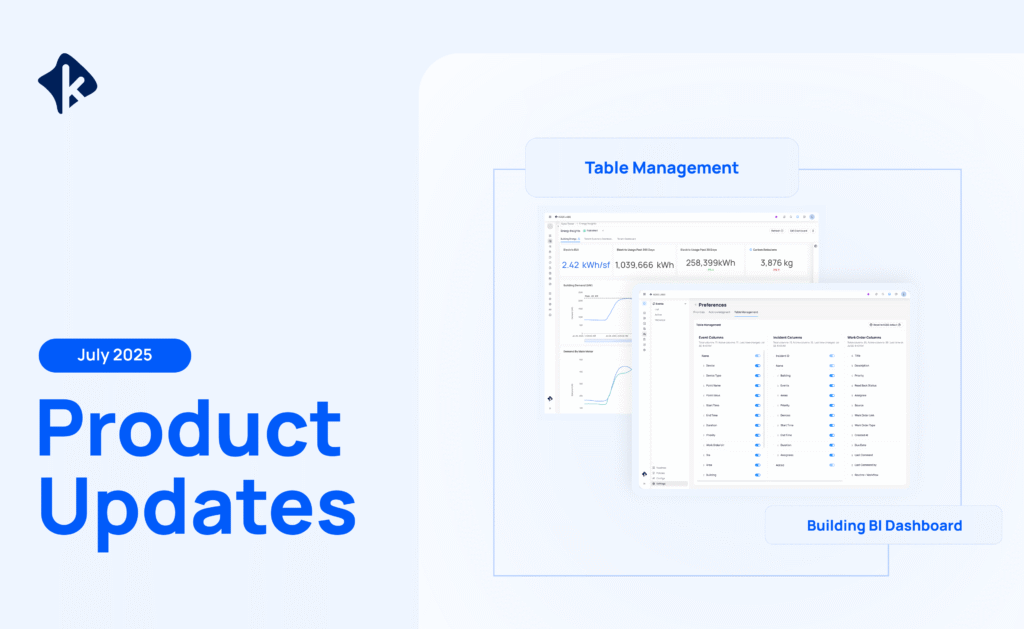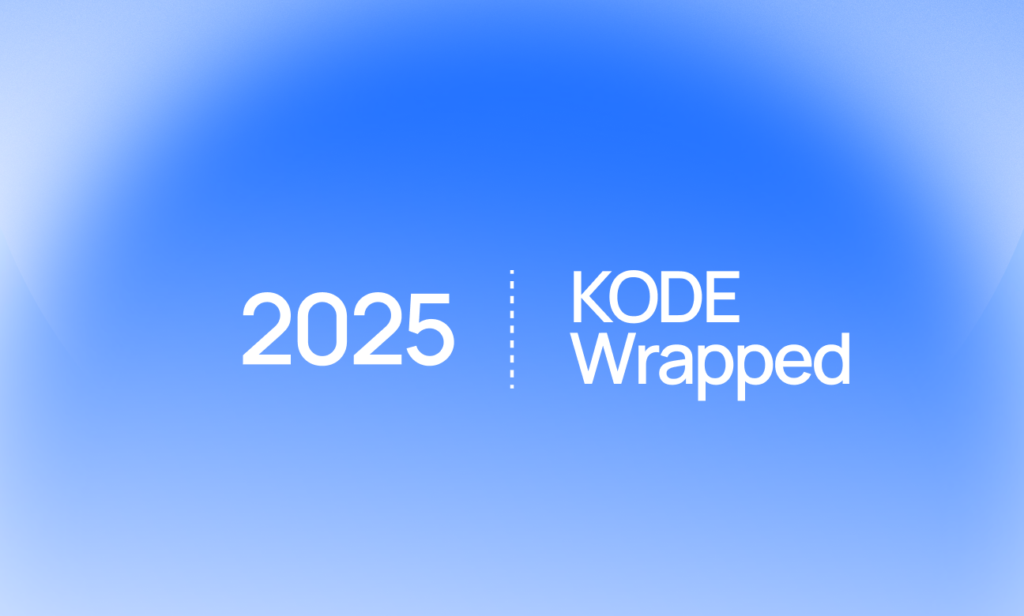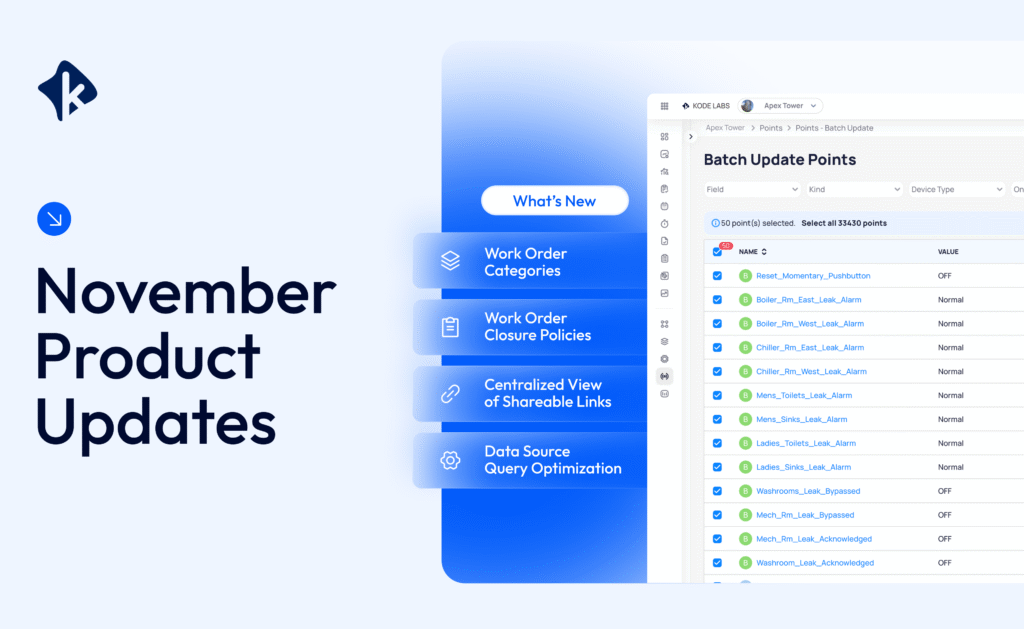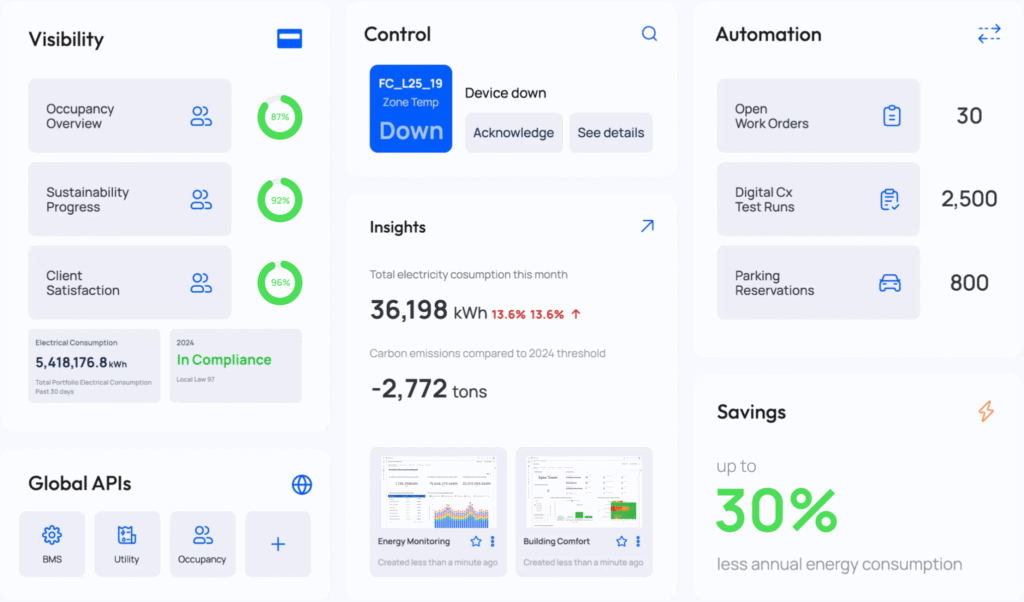By KODE Team
On this page
Sign up to our newsletter
Subscribe to receive the latest blog posts to your inbox every week.
By subscribing you agree to with our Privacy Policy.
In July, we rolled out updates that deliver greater control, streamlined workflows, and improved collaboration — helping you manage large portfolios with more consistency and speed. From new table management options in FDD to enhanced filtering, bulk event acknowledgment, and flexible multi-configuration rules, these features are designed to simplify maintenance operations and empower teams to focus on what matters most: resolving issues faster and optimizing building performance.

Digital Maintenance
Fault Detection & Diagnostics (FDD)
Table Management in FDD
You can now manage column preferences at the organizational level, allowing admins to set standardized column order and visibility across FDD Events, Faults, and Work Order views. By standardizing column setups across teams, this feature improves consistency, clarity, and efficiency in monitoring workflows. Remote teams managing large portfolios benefit from a shared view that reduces confusion, enhances collaboration, and supports faster, more accurate decision-making.
Static Filters in FDD
You now have access to static filters, including attributes like Country, State, District, Region, City, Brand, and Data Source. This is perfect for large building portfolios providing an extra layer of control for users when navigating fault data, enabling more targeted and context-aware views within large building portfolios.
Acknowledging Events Portfolio-Wide
Did you know that you can now bulk acknowledge events? This streamlines the process of managing large columns of alerts or notifications across multiple buildings, especially useful for remote monitoring teams handling portfolios at scale.
Multi-Configuration for FDD Rules
Multi-Configuration, allowing a single FDD rule to be applied with different parameter sets across groups of devices or equipment. This enables rule customization based on specific operational contexts without duplicating the rule itself. This will offer you greater flexibility and precision in fault detection by giving you the power to fine-tune rules for different types of building zones. It streamlines configuration management, reduces rule clutter, and improves the accuracy and relevance of fault alerts, ultimately leading to better system performance and easier maintenance.
Integrations Library
Three new API integrations have been added. Read about them here.




